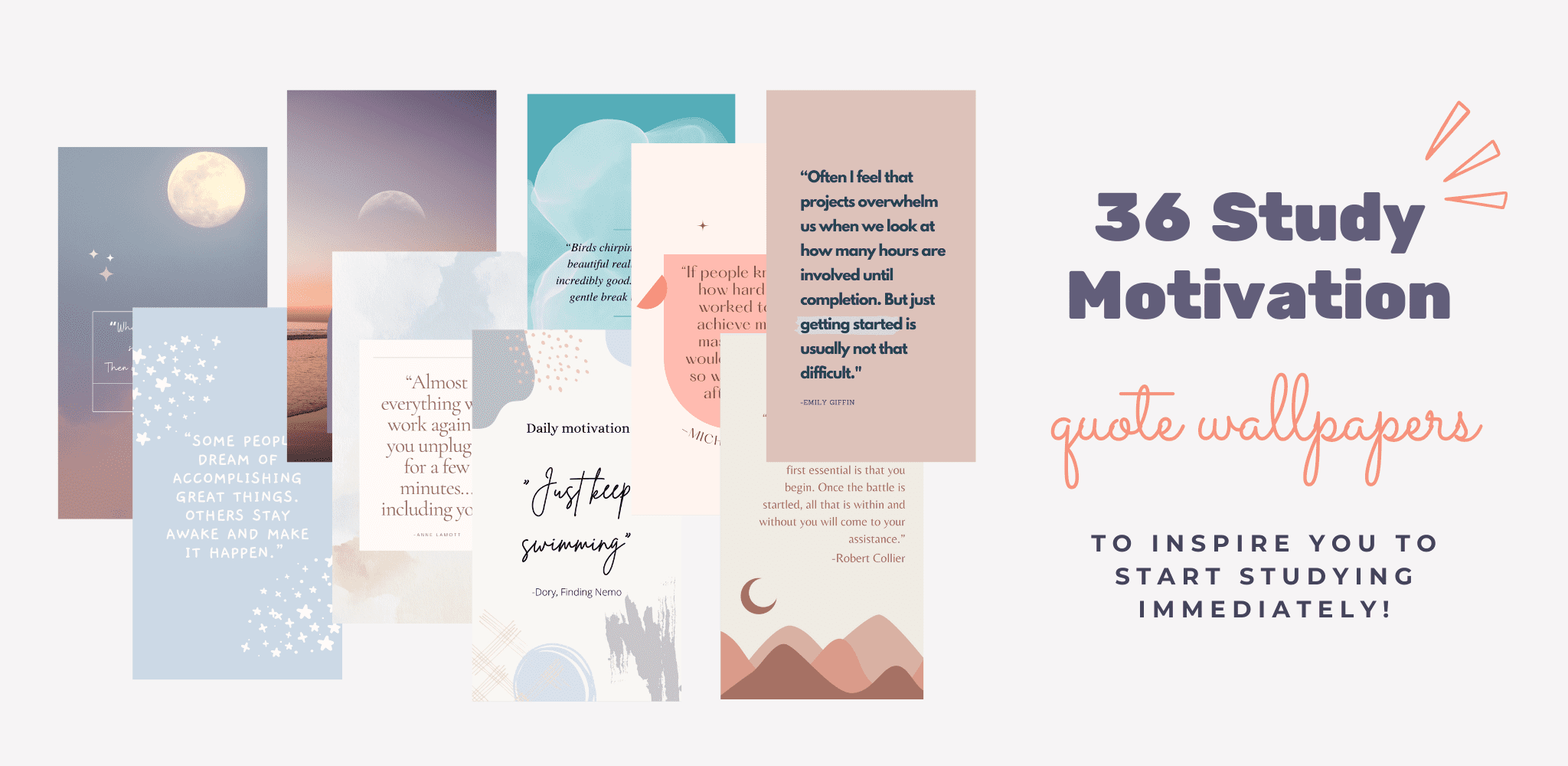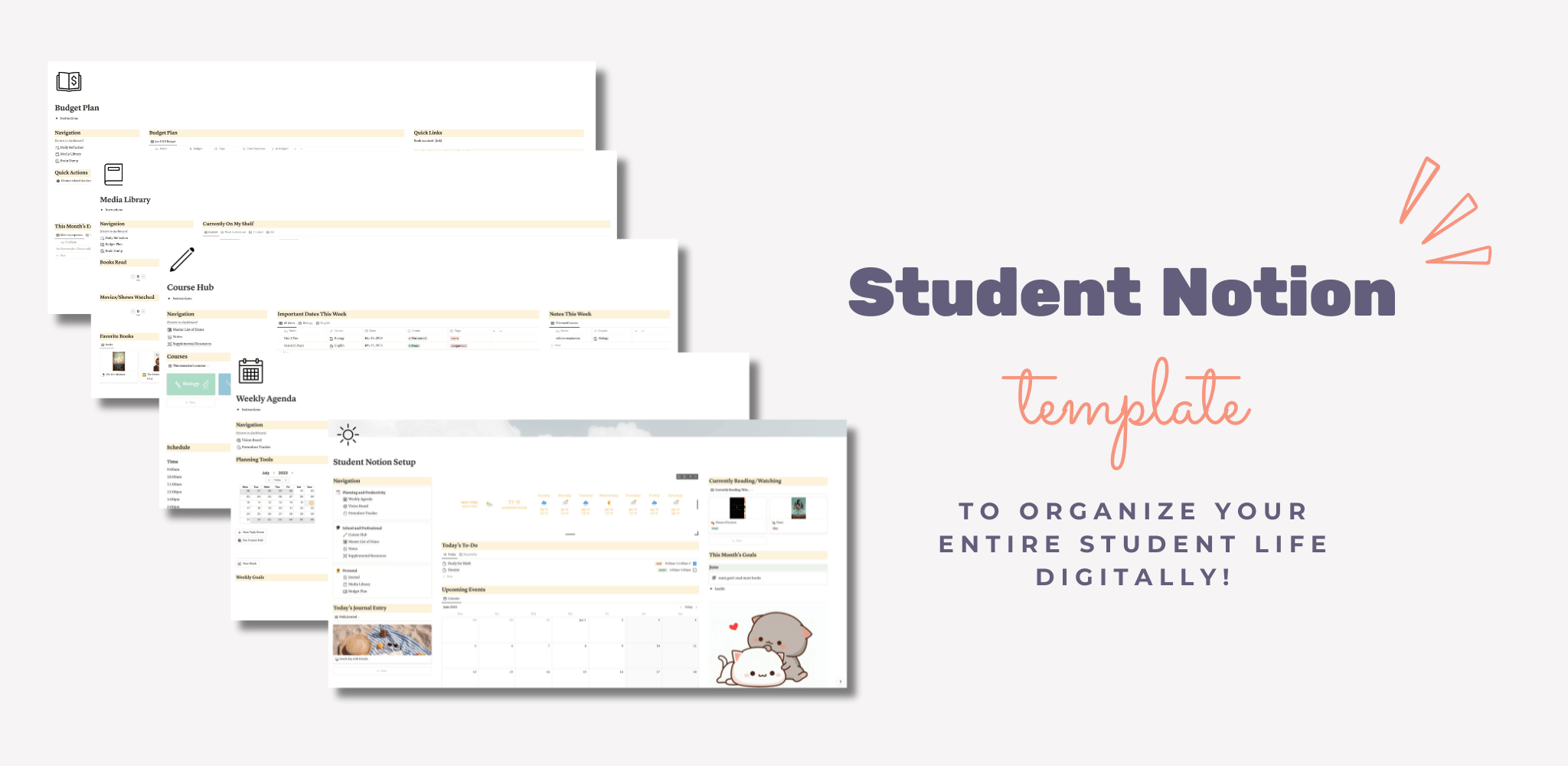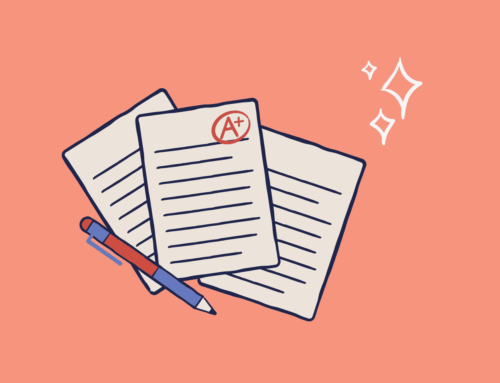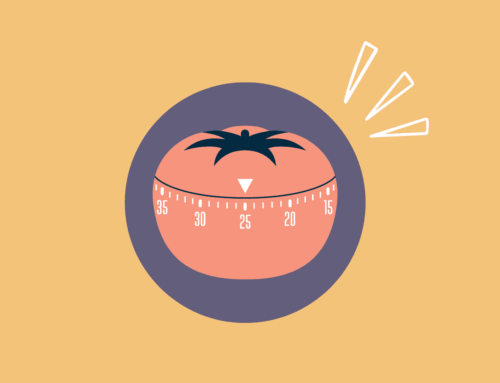
Do you often find that despite taking notes in class, you can’t remember anything after the lecture? Most note-taking methods are passive—you write information down mindlessly but don’t absorb it.
If this is a problem you struggle with, the flow method of note-taking can come in handy! The flow method involves jotting down concepts and identifying their relationships to one another.
It’s similar to the mind mapping method of note-taking, except you can use it during live lectures. Not only that, but unlike linear methods of note-taking (e.g., outline method, Cornell method), the “identifying relationships” part of the flow method makes it possible to engage in active learning during class.
In this post, I’ll be covering:
- What the flow method is and when to use it
- Pros and cons of the flow method
- How to use the flow method in 4 simple steps
- Additional tips to make the most of the flow method
Let’s get started!
What is the Flow Method of Note-Taking?
The flow method of note-taking involves jotting down concepts in a nonlinear fashion and identifying their relationships to one another. There are 2 main aspects of the flow method:
- Simplification: The flow method is meant to create readable notes. This means you should focus on jotting down major concepts (instead of every nitty-gritty detail) and writing them in your own words.
- Visualization: The flow method caters to visual learning. Arrows connecting concepts to one another make it easy to see how everything is related. (This makes the flow method distinct from linear note-taking methods, like the outline method or Cornell method.) Also, you can add quick drawings or diagrams to enhance your notes.

When to Use the Flow Note-Taking Method
One of the primary advantages of the flow method is that it can be used for almost any subject. Many note-taking methods are only suitable for humanities subjects or are only suitable for technical subjects. However, the flow method’s focus on the logical flow of ideas is something that applies to most subjects.
Also, you can use the flow method during live lectures or after live lectures (to rewrite your notes quickly and reinforce learning). Many methods of note-taking should only be used during a live lecture (like the sentence method) or after (like the mapping method), but the flow method is uniquely versatile.
Personally, I love using the flow method for technical classes because the arrows help me visualize logical, step-by-step processes.
The only time I wouldn’t recommend using the flow method is if you need to write down a lot of details. This might apply to classes that are vocabulary-intensive (like anatomy), as the flow method may not be detailed enough.
Nevertheless, it’s still possible to reap the benefits of the flow method’s emphasis on active learning through a hybrid note-taking strategy. I’ll explain this in the section titled “Tips to Make the Most of the Flow Method of Note-Taking”.
You may also like “14 Effective & Efficient Note-Taking Methods”
Flow Method of Note-Taking Advantages and Disadvantages
Like any other note-taking method, the flow method has several unique pros and cons. You should consider these when deciding whether to use it in a given situation.
Advantages
- The flow method provides a fast way to take notes. Since the focus is on higher-level concepts and how they relate to one another, you don’t need to get caught up in small details.
- The method promotes active learning. Many note-taking methods are “mindless,” meaning that you write things down without thinking about them. However, the flow method requires you to identify connections between concepts.
- You can use the flow method for almost any class. Many note-taking methods are only suitable for humanities classes or technical classes, but this method is applicable to both.
- You can easily adapt the flow method to digital note-taking.
You may also like “Best Aesthetic Note Taking App (Free & Easy-to-Use)”
Disadvantages
- The flow method may not be good for classes that require memorization of lots of details. In such cases, it may not be detailed enough. Other note-taking methods like the outline method, Cornell method, or even sentence method may be more suitable. However, as I mentioned, it’s still possible to reap the benefits of the flow method for such classes using a hybrid note-taking strategy. (I’ll explain this in the additional tips section.)
- You can’t use this method to take notes on a topic without prior knowledge. It’s difficult to make connections between concepts when you’re being exposed to them for the first time. Therefore, I recommend scanning the syllabus and/or associated textbook readings before a live lecture. This helps me take useful notes using the flow method during class.
- Notes taken using the flow method can get messy.
- You may find it difficult to use the flow method during a fast-paced lecture. However, you can always focus on jotting down key concepts during the lecture, then adding arrows denoting connections after.
How to Take Notes With the Flow Method in 4 Steps
Step #1: Gather Your Note-Taking Supplies
If you’re taking handwritten notes, make sure to have a large enough piece of paper and a pen.
If you’re taking digital notes, have your favorite note-taking app and stylus prepared. (Check out the boxing method for another effective digital note-taking strategy.)
Step #2: Jot Down Main Concepts
During the lecture, jot down the main concepts that you hear.
In my example of notes taken using the flow method (pictured in the next step), the main concepts were “vectors” and “dot product”.
Step #3: Branch Out With Details
As you hear details relating to the main concepts, jot them down and connect them to the main concepts using arrows. Then, connect supporting details using arrows as well.
As you can see, the flow method makes it easy to see the logical relationships between concepts. Also, the flow method is highly customizable, and you can jot down notes and relate them to one another as you see fit.

You can also add drawings and diagrams to reinforce learning. In this research study, researchers found that drawing results in better retention than writing.
Step #4: Review Your Notes
Finally, you must review your notes. Even though the flow method promotes active learning, you’re still bound to forget information if you don’t review it.
According to Ebbinghaus’s Forgetting Curve, we forget on average 90% of new concepts we learn after being exposed to them once. Therefore, you must review your notes—preferably within 24 hours of taking them.
However, there are effective and not-so-effective ways to review your notes.
How to Review Notes Effectively
Do you study by rereading your notes or highlighting keywords? These strategies don’t promote learning or retention of information. Instead, you should use scientifically-proven study methods, like active recall and spaced repetition.
Active recall involves pulling information from your head instead of relying on an external source, like your notes or textbook. To review flow notes with active recall, only look at the main concepts and try to recall as much as you can about the supporting details before checking.
In addition to active recall, you must use spaced repetition. To effectively combat the Forgetting Curve, you have to review your notes in periodic intervals after taking them. Luckily, after each review session, you can enjoy a longer interval until your next review session.
Since it’s easy to forget when to do spaced repetition sessions, I automate my study schedule in Notion. (If you’re not familiar with Notion, it’s an all-in-one workspace that I use as a student planner app and note-taking app.)
As you can see, I’ve set up a database in Notion that gives me my next review date based on my last review date and how many review sessions I’ve already done.

Tips to Make the Most of the Flow Note Taking Method
Tip #1: Review the Syllabus Before Class
I mentioned that one of the disadvantages of the flow method is not being able to use it if you have no prior knowledge of a topic. However, you can easily resolve this problem by reviewing the syllabus before class.
Check what concepts will be covered during the lecture. If there is an associated textbook reading or other learning material, go over it. Having some idea about the material that will be taught will make note-taking SO MUCH easier.
In the past, I would go into class with zero prior knowledge, then struggle to keep up. After class, I would have to spend way more time self-learning material. However, by spending 15-30 minutes scanning over learning materials before class, I’ve been able to take more effective notes and save loads of time after class.
Tip #2: Use a Hybrid Note-Taking Strategy
I mentioned that another disadvantage of the flow method is that it’s unsuitable for classes involving lots of memorization. However, I also mentioned that it’s possible to use it in a hybrid format.
If you have to memorize lots of details for a class (like anatomy or history), opt for a detailed note-taking method, like the outline method, Cornell method, or (possibly) sentence method during class.
To reinforce learning after class, rewrite your notes using the flow method. The flow method’s emphasis on visual learning and logical flow of ideas can help you better understand and remember the information you learned in class. Plus, it doesn’t take much time!
Tip #3: Use Symbols and Abbreviations
If you want to keep up with a live lecture (or in general, take notes faster), you MUST have a shorthand note-taking system. Start using symbols and abbreviations in your notes to increase your speed.
If you’re not sure what to use, check out this list of 150+ symbols and abbreviations for note-taking.
Tip #4: Add Colors
You can add colors to make your notes more readable and interesting to study. If you have drawings or diagrams, color them in. You can also highlight keywords to make them stand out.
FAQ
What are the benefits of flow method note taking?
The flow method of note-taking provides many important benefits. Since it focuses on higher-level concepts and their relationships to one another, it can be used to take notes quickly. This makes it suitable for note-taking during live lectures.
Also, unlike other methods of note-taking, it requires you to use critical thinking while taking notes. You have to identify connections between concepts instead of blindly writing information down.
Lastly, the flow method is suitable for most subjects. Even if the subject requires memorization of lots of details, you can use the flow method in a hybrid format as a supplement to your learning.
What are the cons of flow notes?
You can’t use the flow method if you don’t have prior knowledge of a topic. (Or at the very least, it will be difficult.) However, as I mentioned in “Tip #1: Review the Syllabus Before Class,” gathering prior knowledge on a topic before a live lecture saves you a ton of time studying after the lecture. If you review the syllabus and associated learning materials before class, you should be able to use the flow method of note-taking with ease.
Notes taken using the flow method can get messy, however. This is especially apt to happen if the piece of paper you use isn’t large enough. If you know this might be the case, I recommend trying digital note-taking. This way, you don’t have a limit on your note-taking space.
My favorite app for handwritten digital notes is Notability. I use it to mark up lecture slides (as shown in the image below) and to take notes using the boxing method (shown in the second image), amongst other things.

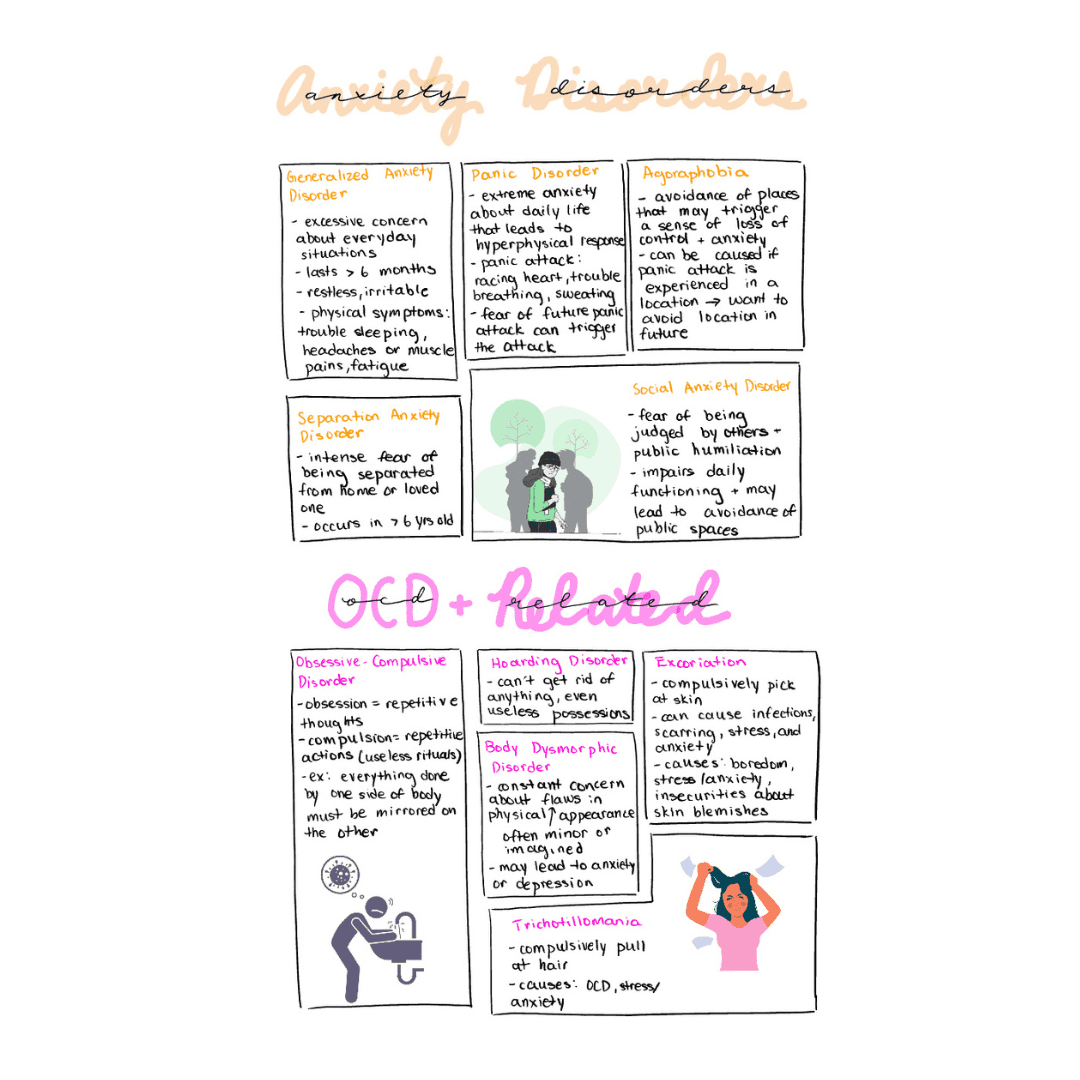
What note taking method works best?
There is no single “best note-taking method”. Different note-taking methods work well in different situations. However, no matter the note-taking method you use, you must employ active recall and spaced repetition to better understand and encode information into your long-term memory.
In the Step #4 of “How to Use the Flow Method of Note-Taking,” I discussed how you can apply active recall and spaced repetition.
Of course, you can also apply these techniques to notes taken using other methods, all of which have unique pros and cons.
The mapping method, for instance, provides a visual way of seeing the relationships between topics. The charting method makes it easy to compare and contrast information. The outline method provides a visual hierarchy of topics. The boxing method helps you organize notes by topic cluster.
Check out this post for 14 note-taking methods and the situations in which they’re most effective.
Overview of the Boxing Method of Note-Taking
The flow method of note-taking is a simple note-taking method that involves jotting down concepts and relating them to one another with arrows.
It provides an easy way to do active learning in class and is applicable to most subjects. Also, you can use it for live lectures or to rewrite notes after class to supplement your learning.
Here are the 4 steps to using the flow method:
- Gather your note-taking materials.
- Write down the main concepts.
- Add supporting details (these can be in the form of text or drawings/diagrams). Connect them to the main concepts and to each other using arrows.
- Study your notes using active recall and spaced repetition.
That’s it! I hope this article helped you understand how to use the flow method to improve your note-taking and learning in class!
For more posts on studying and note-taking, check out:
- 14 Methods of Note-Taking That Are Efficient & Effective
- The Outline Method of Note-Taking
- The Mapping Method of Note-Taking
- The Charting Method of Note-Taking
- The Sentence Method of Note-Taking
- The Boxing Method of Note-Taking
- 5 Ways to Increase Attention Span While Studying Immediately (+ 5 Long-Term Methods)
- Best Aesthetic Note Taking App (Free & Easy-to-Use)
- 7-Day Dopamine Detox for Studying—Skyrocket Your Focus Now!
- 7 Secret Tips For Studying That Will Transform How You Study
What subjects do you plan on using the flow method of note-taking in? Let me know in the comments below!

Learning With Angie is a place to share honest, unfiltered advice to promote student success. So if you’re a student (high school, college, or beyond) looking for tips on productivity, studying, personal growth, and more to reach your potential, this is the place! To read more about Learning with Angie, click here.

